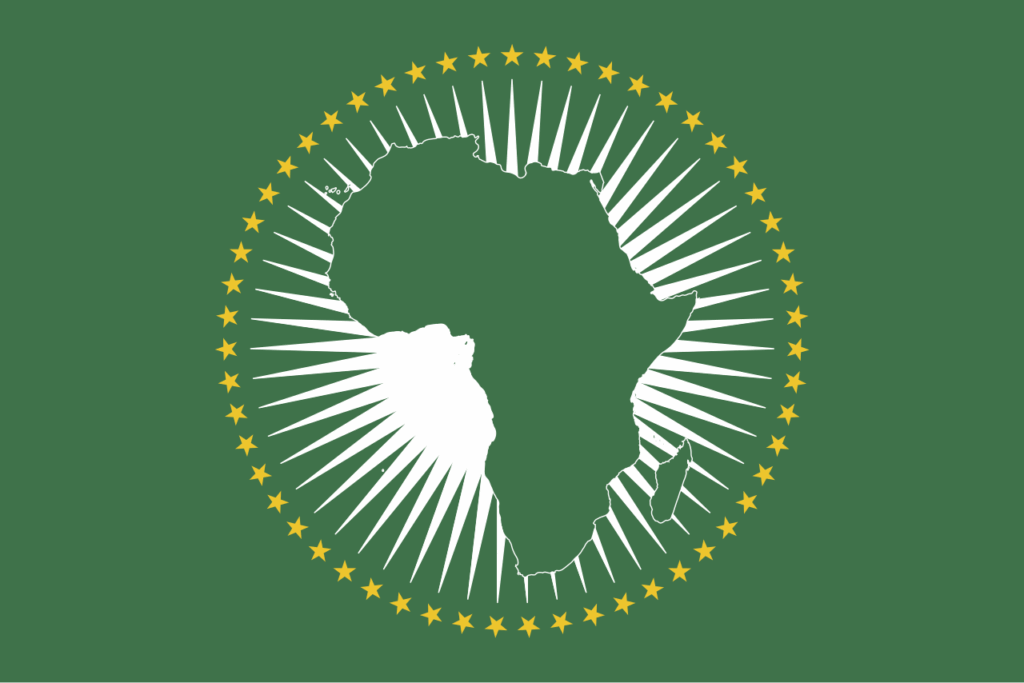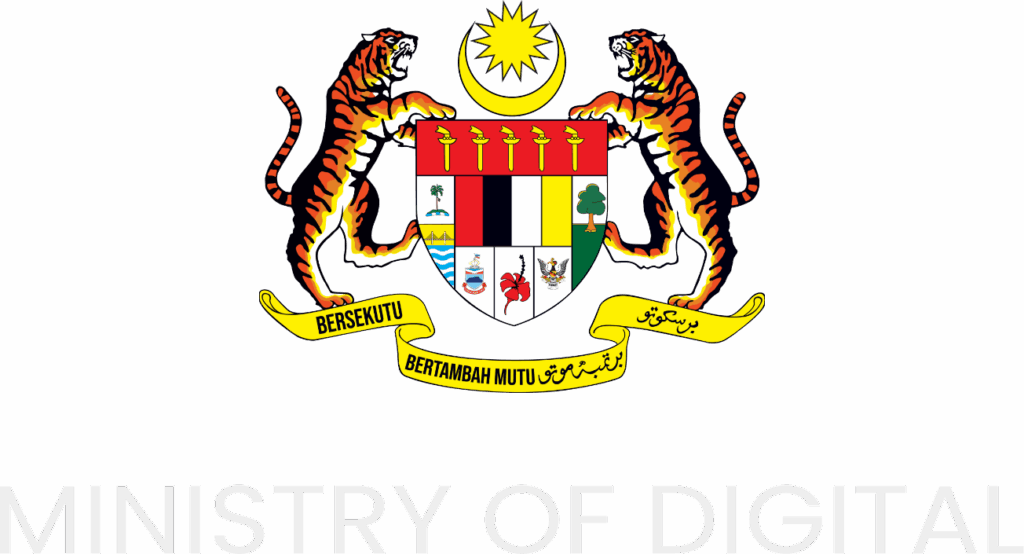ISAR Global Intelligence Brief
19 October 2025
The international conversation on AI governance remains persistently focused on Brussels and Washington. The EU AI Act’s implementation trajectory, American sectoral approaches, and transatlantic coordination efforts dominate policy discussions, academic analysis, and media coverage. This concentration of attention is understandable given the economic weight and regulatory influence of these jurisdictions, but it creates significant blind spots in our understanding of how AI governance actually functions across different institutional contexts.
Between May and October 2025, three jurisdictions—the United Arab Emirates, the African Union, and Malaysia—have advanced AI governance initiatives that reveal distinct implementation patterns largely absent from mainstream policy discourse. These developments matter not because they represent “best practices” to be emulated, but because they illuminate different governance challenges that international coordination mechanisms will need to accommodate.
The UAE has implemented what appears to be the world’s first binding regulatory requirement for AI disclosure in national elections. The African Union convened a high-level policy dialogue involving over 40 countries whilst confronting stark data showing extreme concentration of AI investment and capability. Malaysia continues developing multiple AI governance frameworks across different regulatory authorities, providing a real-time case study in coordination complexity.
Each reveals something important about governance implementation that policymakers negotiating international frameworks need to understand. This analysis examines what these three cases tell us about the gap between coordination rhetoric and institutional reality.
Case Study One: UAE – When Governance Gets Operationally Specific

On 12 October 2025, the United Arab Emirates announced what it describes as the world’s first policy specifically regulating artificial intelligence use in national elections.[1] Omar Sultan Al Olama, Minister of State for Artificial Intelligence, Digital Economy and Remote Work Applications, unveiled the National Elections Committee Policy on the Use of Artificial Intelligence, developed in partnership with the Federal National Council and the Ministry of State for Federal National Council Affairs.
The policy establishes a mandatory disclosure requirement: every candidate in Federal National Council elections must declare and register any use of AI tools in their campaigns.[1] As Al Olama explained, AI used in national election campaigns would be “declared, reviewed, and monitored” to preserve fair and transparent election processes.[2] The Minister acknowledged that whilst AI could help candidates reach broader audiences, it could equally be “misused to influence voters unfairly”, particularly through its application in digital content creation.[2]
What distinguishes this development from the numerous international statements on AI and electoral integrity is its operational specificity. Rather than issuing principles about “ensuring fair elections” or “preventing manipulation”, the UAE has created an enforceable disclosure mechanism with clear compliance requirements. Candidates must register AI tool usage. This registration is subject to review. The usage is monitored.
This represents a significant governance innovation: moving from principle to process. International frameworks—whether from the UN, OECD, or regional bodies—tend to articulate high-level commitments to election integrity in the age of AI. The UAE policy demonstrates what implementation of such commitments actually requires: specific disclosure obligations, institutional capacity for review, and monitoring mechanisms.
The announcement also revealed the UAE’s broader approach to AI governance development. Al Olama indicated the government is developing guidelines for AI use in journalism and digital content creation, specifically addressing misinformation and deepfake content.[1] He cited research from The Thomson Reuters Foundation showing that 81% of journalists now use AI tools in their daily work, yet fewer than 13% of newsrooms have formal AI-use policies.[2] The UAE is positioning itself to fill this policy gap.
Additionally, Al Olama noted that the UAE employs “legislative laboratories”—controlled environments where new laws can be tested before nationwide rollout.[1] These experimental spaces enable policymakers to evaluate social, economic, and governmental impacts before wider application. This approach suggests systematic thinking about governance implementation, not merely policy announcement.
The UAE’s speed in moving from general AI strategy to specific, enforceable requirements in particular use-cases contrasts sharply with the timeline of international framework negotiations. Whilst larger jurisdictions debate comprehensive AI governance approaches, smaller jurisdictions with different administrative structures can implement targeted interventions more rapidly. This velocity difference has implications for how international coordination mechanisms might function.
Case Study Two: African Union – The Concentration Reality Behind Continental Cooperation

On 17 May 2025, the African Union Commission, in collaboration with the Government of Ethiopia and the Institute for Security Studies, convened a High-Level Policy Dialogue on the Development and Regulation of AI in Africa in Addis Ababa.[3] The dialogue brought together participants from over 40 African countries, including Heads of State and Government, Ministers, AU Commissioners, diplomats, civil society representatives, academia, and private sector leaders.
The event, held as part of the Ethio Tech Expo 2025 under the theme “Leveraging Artificial Intelligence for Africa’s Prosperity and Collaboration”, aimed to explore AI’s potential to transform Africa’s development trajectory and accelerate implementation of Agenda 2063 and the Sustainable Development Goals.[3] It builds upon the AU Continental Artificial Intelligence Strategy, which the African Union Executive Council adopted in July 2024.[4]
The Continental AI Strategy represents a genuinely ambitious governance framework. It emphasises five focus areas: harnessing AI’s benefits, building AI capabilities, minimising risks, stimulating investment, and fostering cooperation.[4] Implementation is planned in two phases, with Phase 1 (2025-2026) focusing on establishing governance structures, creating national AI strategies, mobilising resources, and building capacity.[4]
However, during a high-profile panel titled “Collaborative Strategies for AI Adoption in Africa”, H.E. Lerato D. Mataboge, African Union Commissioner for Infrastructure and Energy, presented data that reveals the implementation challenge the Continental Strategy faces. Commissioner Mataboge acknowledged the growing presence of African startups using AI for public service delivery, particularly in agriculture, healthcare, education, and language services. But she pointed out that innovation remains highly concentrated in just a few countries.
The data is stark: over 83% of AI startup funding in Q1 2025 went to Kenya, Nigeria, South Africa, and Egypt.[3] As Commissioner Mataboge observed, “AI should help narrow the digital divide, not widen it.”[3]
This concentration poses a fundamental governance challenge. The Continental AI Strategy envisions coordination across 55 member states, with the African Union playing a coordinating role to ensure Member States adhere to overarching principles and standards.[4] But when capability—measured by investment, technical infrastructure, and innovation activity—is concentrated in four countries representing less than 8% of the membership, how does continental coordination actually function?
The strategy document acknowledges this reality implicitly. It notes that AU members without existing AI policies are encouraged to use the Continental Strategy as a framework to develop their national strategies, whilst those with existing policies should review and align with the continental approach.[4] But this creates a two-tier implementation reality: a small number of countries with substantial AI activity adapting existing governance approaches, and a much larger number building from minimal existing capacity.
Commissioner Mataboge identified the critical challenges: digital infrastructure deficits, the AI skills gap, absence of high-quality datasets, and the funding gap.[3] These aren’t merely implementation details; they’re structural conditions that determine whether continental coordination can move beyond aspirational frameworks to actual governance mechanisms.
The African Union case reveals something important about international coordination: even well-designed frameworks with appropriate institutional architecture confront massive disparities in implementation capacity. Continental cooperation in AI governance isn’t simply a matter of agreeing principles; it requires addressing the concentration of resources, capability, and activity that makes coordination functionally asymmetric.
Case Study Three: Malaysia – Framework Proliferation in Action

Malaysia presents a different governance pattern: a motivated jurisdiction actively developing comprehensive AI governance whilst managing coordination complexity across multiple regulatory authorities and framework initiatives.
In late 2024, the Malaysian government established the National AI Office (NAIO), which has set seven deliverables for completion by the end of 2025.[5] These include an AI Technology Action Plan 2026-2030, an AI adoption Regulatory Framework, acceleration of AI Technology Adaptation programmes, an AI Code of Ethics, an AI Impact Study for Government, a National AI Trend Report, and development of datasets related to AI technology.
This ambitious agenda sits alongside other ongoing governance initiatives. In September 2024, the Ministry of Science, Technology, and Innovation launched the National Guidelines on AI Governance and Ethics (AIGE), intended to support implementation of the Malaysian National Artificial Intelligence Roadmap 2021-2025.[6] The AIGE establishes seven key principles—fairness, reliability and safety, privacy and security, inclusiveness, transparency, accountability, and human-centredness—and targets three stakeholder categories: end users, policymakers, and AI technology providers.[6]
Additionally, Malaysia’s Personal Data Protection Act underwent major amendments taking effect in June 2025, significantly updating data protection standards to meet demands of the global digital economy.[7] However, as legal analysts have noted, Malaysia’s AI regulatory framework remains fragmented. The AI Guidelines emphasise transparency, but the Personal Data Protection Act does not yet regulate automated decision-making—an increasingly relevant area as AI adoption grows.[8]
To address this gap, Malaysia is developing Profiling and Decision-Making Guidelines as part of a series of seven guidelines to be introduced pursuant to the Personal Data Protection Act.[8] The Digital Minister has acknowledged the urgent need for clearer rules in this area, signalling that these guidelines will likely incorporate AI-specific provisions, including regulation of automated decision-making. Two of the seven anticipated guidelines have already been issued: the Notification of Data Breach Guidelines and the Data Protection Officer Guidelines.[8]
Malaysia’s situation illustrates the coordination challenges that emerge when AI governance intersects with existing regulatory frameworks developed for different purposes. The country has:
- A National AI Office with seven deliverables under development
- National AI Governance and Ethics Guidelines already launched
- A Personal Data Protection Act being enhanced with seven separate guidelines, several addressing AI-related concerns
- Various sectoral initiatives across different ministries
Each initiative has legitimate objectives and appropriate institutional sponsorship. Yet the proliferation of frameworks creates coordination questions. How do the National AI Office deliverables align with the already-launched AIGE principles? When the Profiling and Decision-Making Guidelines are finalised, how will they interact with the AI adoption Regulatory Framework being developed by NAIO? Which framework takes precedence when requirements potentially conflict?
Malaysia isn’t failing at AI governance; it’s experiencing the natural complexity that emerges when a motivated government tackles a cross-cutting technology through existing institutional structures. Different regulatory authorities have relevant jurisdiction. Different frameworks address different aspects of AI deployment. Coordination isn’t automatic.
A recent analysis from the Institute of Strategic and International Studies (ISIS) Malaysia noted that Malaysia’s AI governance ecosystem consists of “unconnected players, which undermines efforts to utilise resources effectively”.[9] The analysis recommended that Malaysia should not pursue hard regulations in haste, and suggested strengthening existing laws for critical issues whilst developing voluntary guidelines more broadly. It also recommended sectoral-based governance approaches, drawing from Malaysia’s cybersecurity and data protection experience.[9]
The Malaysian case demonstrates that even when political will and technical capacity exist, the transaction costs of coordinating across multiple frameworks and regulatory authorities remain substantial. This has implications for international coordination mechanisms that assume jurisdictions can readily implement internationally agreed frameworks within their existing governance structures.
Comparative Analysis: Three Patterns International Policymakers Should Watch
These three cases reveal distinct governance patterns that international coordination mechanisms will need to accommodate.
Pattern One: Specific Versus Comprehensive
The UAE’s approach demonstrates the governance advantages of operational specificity in particular use-cases. Rather than attempting comprehensive AI regulation, the UAE has implemented a targeted intervention in a high-stakes domain (electoral integrity) with clear compliance requirements. This contrasts with Malaysia’s comprehensive framework development across multiple dimensions simultaneously. Neither approach is inherently superior, but they represent different strategic choices about governance development.
Smaller jurisdictions with centralised administrative structures can potentially implement specific targeted interventions more rapidly than complex multi-framework approaches. Larger jurisdictions or those with federal structures may require more comprehensive coordination. International frameworks that assume all jurisdictions should follow similar governance pathways may underestimate how much administrative structure determines implementation feasibility.
Pattern Two: Continental Ambition Meets Implementation Concentration
The African Union case illuminates the challenge of coordinating governance when capability is highly concentrated. The Continental AI Strategy represents thoughtful framework design, but the 83% funding concentration in four countries creates a fundamental asymmetry in implementation capacity.
This pattern isn’t unique to Africa. Many international coordination efforts confront similar disparities in technical capacity, regulatory sophistication, and market size across participating jurisdictions. The question isn’t whether to pursue coordination despite these disparities, but rather how coordination mechanisms account for them in implementation design.
The AU approach—encouraging countries without policies to use the Continental Strategy as a development framework, whilst asking countries with existing policies to align—acknowledges this reality. But it also creates questions about how “coordination” functions when member states operate at vastly different stages of governance development.
Pattern Three: Framework Proliferation and Coordination Complexity
Malaysia’s experience demonstrates that motivation and capacity don’t automatically solve coordination challenges when multiple regulatory authorities have legitimate jurisdiction over different aspects of AI deployment. Seven NAIO deliverables, seven Personal Data Protection Act guidelines, National AI Governance and Ethics Guidelines, and various sectoral initiatives create a governance landscape requiring active coordination.
This pattern will be familiar to policymakers in many jurisdictions. AI’s cross-cutting nature means it intersects with data protection, consumer protection, sectoral regulation, competition policy, and other established regulatory domains. Each has existing institutional arrangements and regulatory frameworks. Integrating AI governance into these structures whilst maintaining coherence isn’t straightforward.
International frameworks that present AI governance as a discrete policy domain may underestimate the coordination work required to implement such frameworks within existing regulatory architectures.
Forward Intelligence: What to Monitor
These three developments suggest specific areas for ongoing monitoring to track how governance implementation actually progresses beyond framework announcement.
United Arab Emirates:
Will other Gulf Cooperation Council states adopt similar election-specific AI policies? The UAE’s approach could establish a regional pattern, or it might remain jurisdiction-specific depending on different political structures across the region. Additionally, monitoring whether the UAE’s “legislative laboratories” approach produces measurable implementation data that influences subsequent policy development would indicate whether this governance innovation proves sustainable.
The development of guidelines for AI in journalism and digital content creation, as announced by Al Olama, deserves attention. If the UAE implements binding requirements in this domain similar to the election policy, it would further demonstrate the viability of use-case-specific governance approaches.
African Union:
The critical question is which countries actually implement Phase 1 (2025-2026) of the Continental AI Strategy. Do the four countries with 83% of funding concentration implement more rapidly than others? Do Member States without existing AI policies successfully use the Continental Strategy as a development framework, or do capacity constraints prevent meaningful implementation?
Additionally, monitoring whether the AU successfully establishes the proposed regional independent AI Ethics Board and Advisory Board on AI will indicate whether the institutional architecture outlined in the Continental Strategy becomes operational or remains aspirational.
Malaysia:
Which of the seven Personal Data Protection Act guidelines and seven NAIO deliverables are finalised first, and in what sequence? The implementation order may reveal prioritisation and whether coordination across these initiatives proves effective. Additionally, observing whether the Profiling and Decision-Making Guidelines, when finalised, successfully integrate with other AI governance initiatives will test the coordination mechanisms Malaysia develops.
The consultation document approach Malaysia is employing—extensive engagement with private sector before finalising frameworks—represents a particular governance methodology. Monitoring whether this extended consultative process produces better coordination outcomes than more rapid top-down approaches would provide useful process intelligence.
Broader Pattern Recognition:
Beyond jurisdiction-specific developments, these cases suggest a broader question: are we observing the emergence of “governance clusters” based on administrative capacity and institutional structure rather than regional proximity? Do jurisdictions with similar bureaucratic architectures adopt similar governance approaches regardless of geographical location?
If so, international coordination mechanisms may need to think less about regional frameworks and more about capacity-based implementation pathways that acknowledge different jurisdictions face fundamentally different governance challenges based on their institutional structures.
Conclusion: Why Governance Process Intelligence Matters
International AI governance discussions frequently proceed as though coordination is primarily a matter of agreeing principles and establishing frameworks. The UAE election policy, African Union implementation challenge, and Malaysian coordination complexity reveal that governance in practice requires navigating specific institutional realities that vary dramatically across jurisdictions.
The UAE demonstrates that small jurisdictions with centralised administration can implement targeted governance interventions rapidly. The African Union confronts the challenge of coordinating across 55 member states when capability is concentrated in fewer than 8% of participants. Malaysia illustrates that even motivated, capable jurisdictions face substantial coordination complexity when AI governance intersects with multiple existing regulatory frameworks.
None of these jurisdictions has “solved” AI governance. Rather, each is navigating different implementation challenges that international frameworks will need to accommodate if coordination is to produce more than aspirational documents.
Policymakers negotiating international AI frameworks at the UN, OECD, or other multilateral institutions require systematic intelligence on what’s actually happening beyond Brussels and Washington. Not because these other jurisdictions are “leading” governance innovation in ways that should be emulated, but because they’re confronting governance realities that comprehensive international coordination must address.
The gap between governance rhetoric and implementation reality determines whether international frameworks produce meaningful coordination or simply add another layer of principles to an already complex governance landscape. Understanding that gap requires tracking what’s actually happening across diverse institutional contexts.
This is the intelligence ISAR Global provides: systematic analysis of AI governance processes as they actually function, not as international frameworks imagine they should function.
References
[1] Al Amir, K. (2025, October 12). UAE unveils world’s first AI policy for national elections. Gulf News. https://gulfnews.com/uae/government/uae-unveils-worlds-first-ai-policy-for-national-elections-1.500304225
[2] Global Government Forum. (2025, October 16). UAE regulates AI in national elections to promote transparency. https://www.globalgovernmentforum.com/uae-regulates-ai-in-national-elections-to-promote-transparency/
[3] African Union. (2025, May 17). Africa declares AI a strategic priority as high-level dialogue calls for investment, inclusion, and innovation. https://au.int/en/pressreleases/20250517/africa-declares-ai-strategic-priority-investment-inclusion-and-innovation
[4] White & Case LLP. (n.d.). AI Watch: Global regulatory tracker – African Union. https://www.whitecase.com/insight-our-thinking/ai-watch-global-regulatory-tracker-african-union
[5] Tech For Good Institute. (2025, October). Rules in action: Malaysia’s evolving tech governance. https://techforgoodinstitute.org/blog/country-spotlights/rules-in-action-malaysias-evolving-tech-governance/
[6] Chambers and Partners. (2024, September). Insight into Malaysia’s newly launched AI governance & ethics guidelines. https://chambers.com/articles/insight-into-malaysia-s-newly-launched-ai-governance-ethics-guidelines
[7] Future of Privacy Forum. (n.d.). Malaysia charts its digital course: A guide to the new frameworks for data protection and AI ethics. https://fpf.org/blog/malaysia-charts-its-digital-course-a-guide-to-the-new-frameworks-for-data-protection-and-ai-ethics/
[8] Chambers and Partners. (n.d.). Artificial Intelligence 2025 – Malaysia. Global Practice Guides. https://practiceguides.chambers.com/practice-guides/artificial-intelligence-2025/malaysia/trends-and-developments
[9] Institute of Strategic & International Studies (ISIS) Malaysia. (2024, December). Future of Malaysia’s AI governance. https://www.isis.org.my/wp-content/uploads/2024/12/AI-Governance.pdf
About ISAR Global
The Institute for Strategic AI Research Global is an independent think-tank specialising in AI governance intelligence. We provide evidence-based analysis of international coordination mechanisms, policy implementation patterns, and institutional effectiveness to governments, international organisations, and global enterprises.
For governance intelligence briefings and consultation: directorate@isar-global.org

Leave a Reply